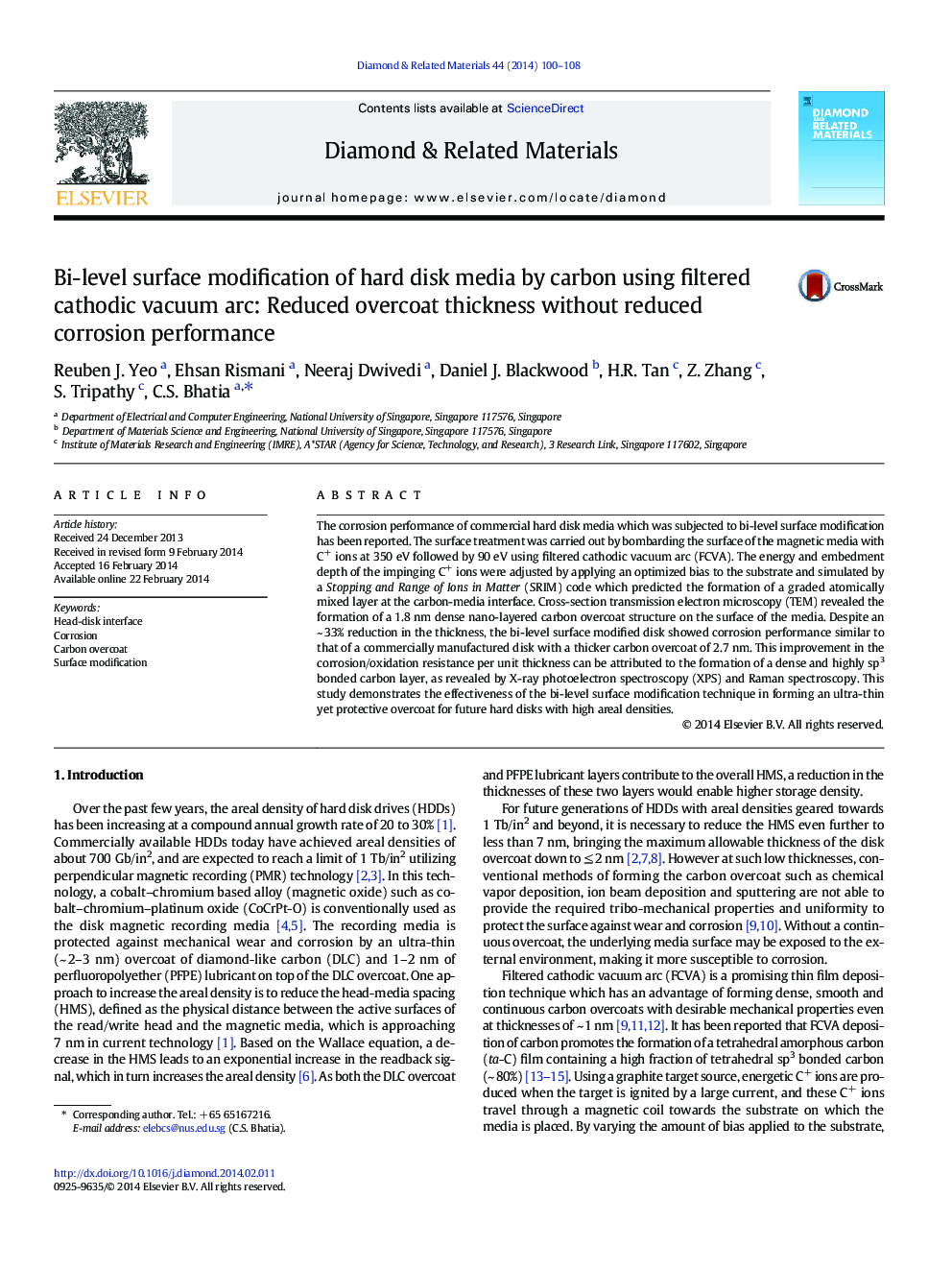| Article ID | Journal | Published Year | Pages | File Type |
|---|---|---|---|---|
| 7111492 | Diamond and Related Materials | 2014 | 9 Pages |
Abstract
The corrosion performance of commercial hard disk media which was subjected to bi-level surface modification has been reported. The surface treatment was carried out by bombarding the surface of the magnetic media with C+ ions at 350Â eV followed by 90Â eV using filtered cathodic vacuum arc (FCVA). The energy and embedment depth of the impinging C+ ions were adjusted by applying an optimized bias to the substrate and simulated by a Stopping and Range of Ions in Matter (SRIM) code which predicted the formation of a graded atomically mixed layer at the carbon-media interface. Cross-section transmission electron microscopy (TEM) revealed the formation of a 1.8Â nm dense nano-layered carbon overcoat structure on the surface of the media. Despite an ~Â 33% reduction in the thickness, the bi-level surface modified disk showed corrosion performance similar to that of a commercially manufactured disk with a thicker carbon overcoat of 2.7Â nm. This improvement in the corrosion/oxidation resistance per unit thickness can be attributed to the formation of a dense and highly sp3 bonded carbon layer, as revealed by X-ray photoelectron spectroscopy (XPS) and Raman spectroscopy. This study demonstrates the effectiveness of the bi-level surface modification technique in forming an ultra-thin yet protective overcoat for future hard disks with high areal densities.
Related Topics
Physical Sciences and Engineering
Engineering
Electrical and Electronic Engineering
Authors
Reuben J. Yeo, Ehsan Rismani, Neeraj Dwivedi, Daniel J. Blackwood, H.R. Tan, Z. Zhang, S. Tripathy, C.S. Bhatia,
